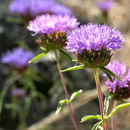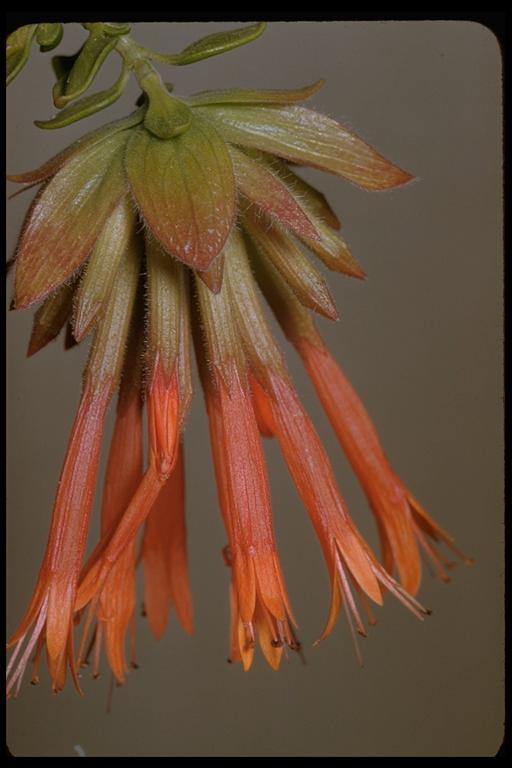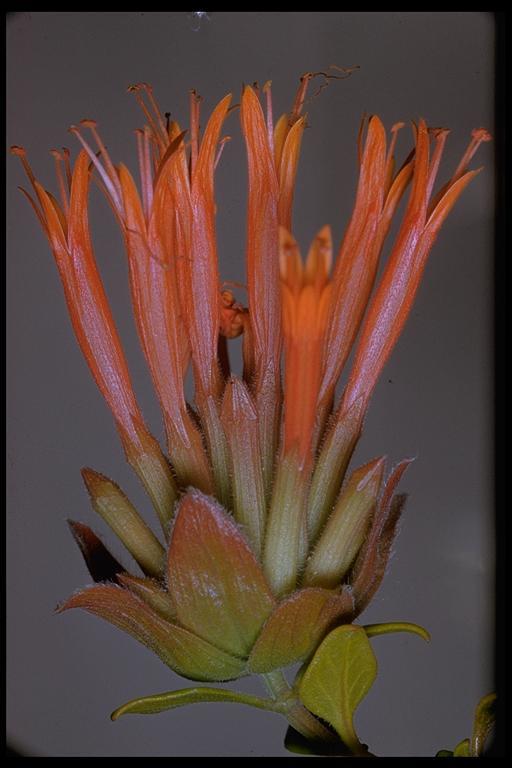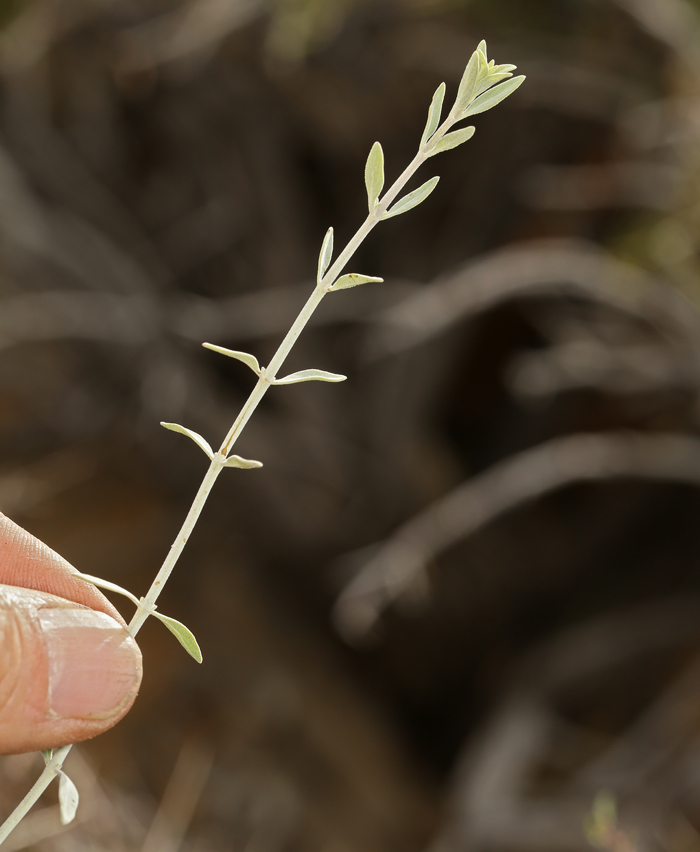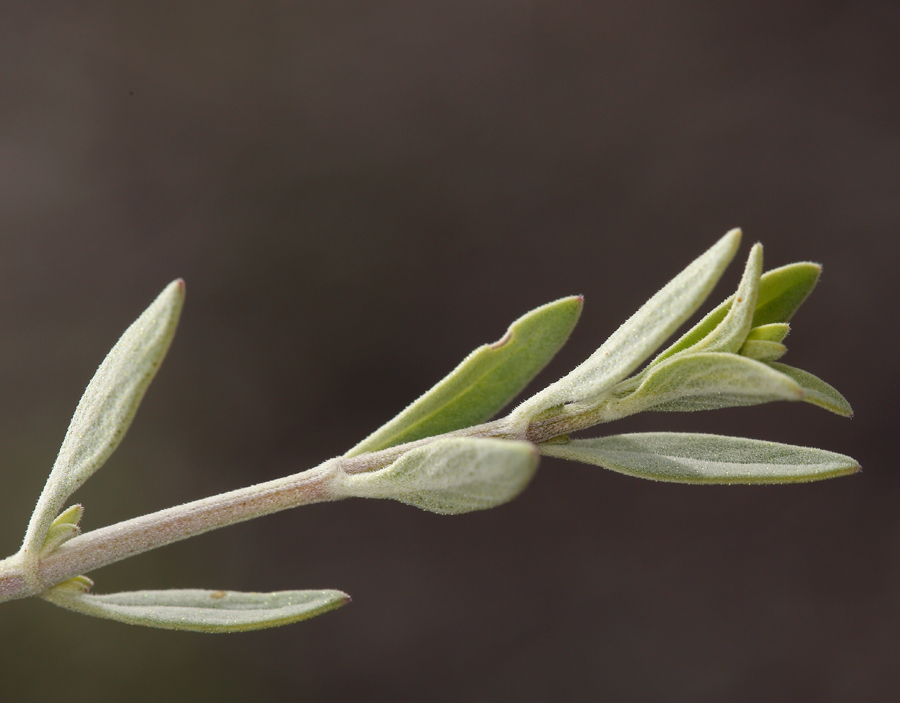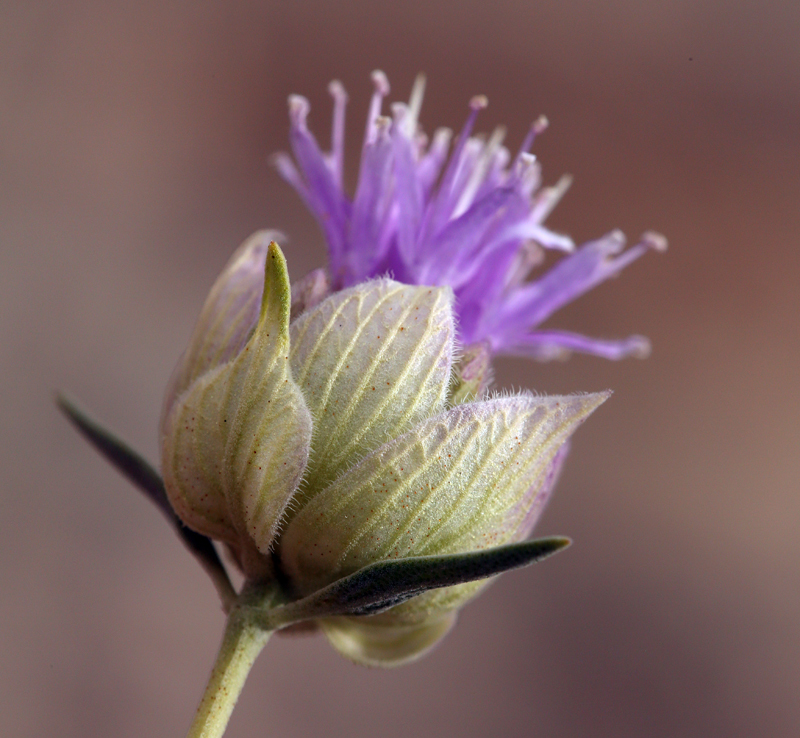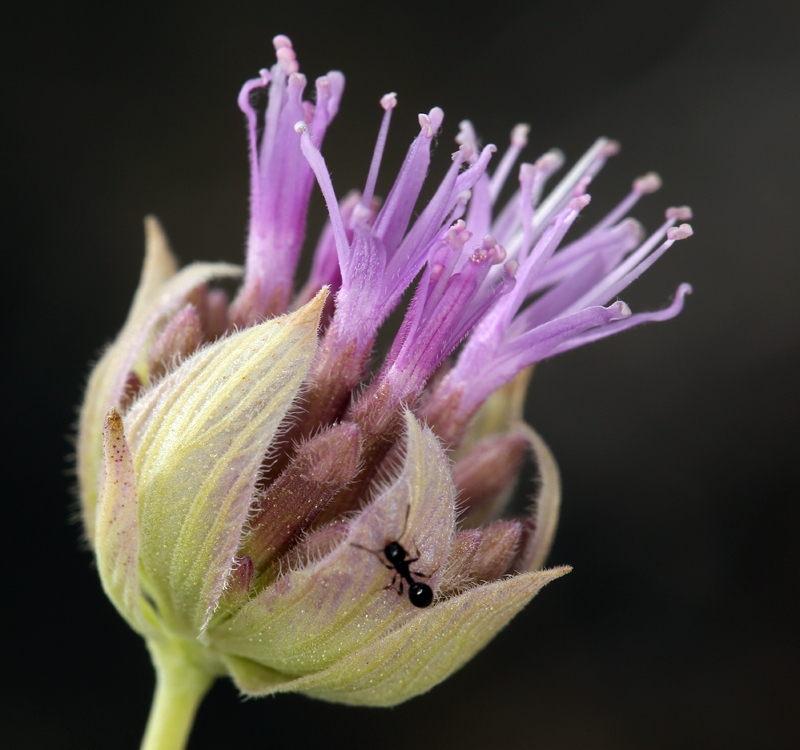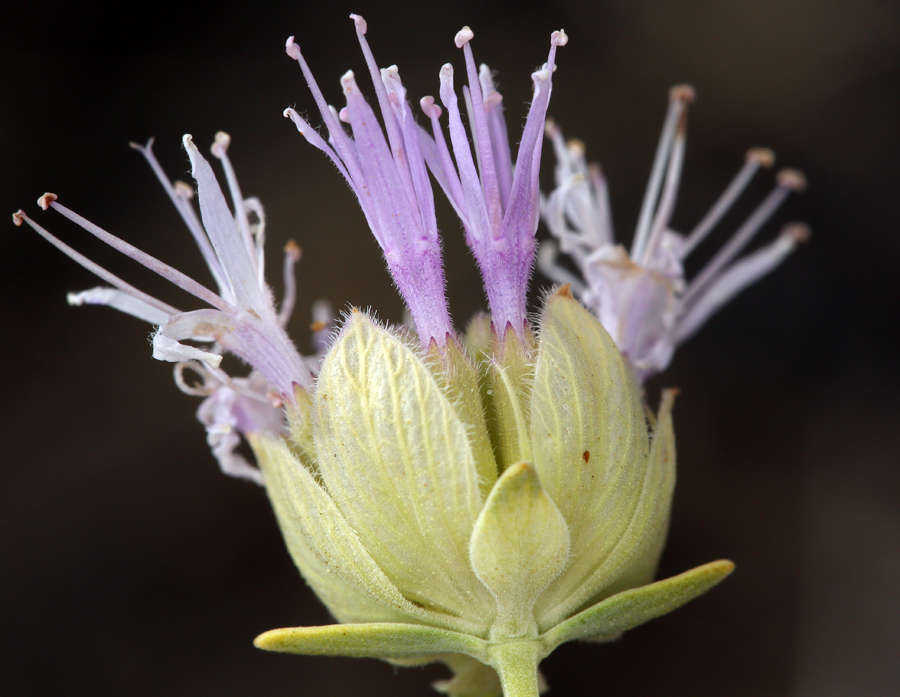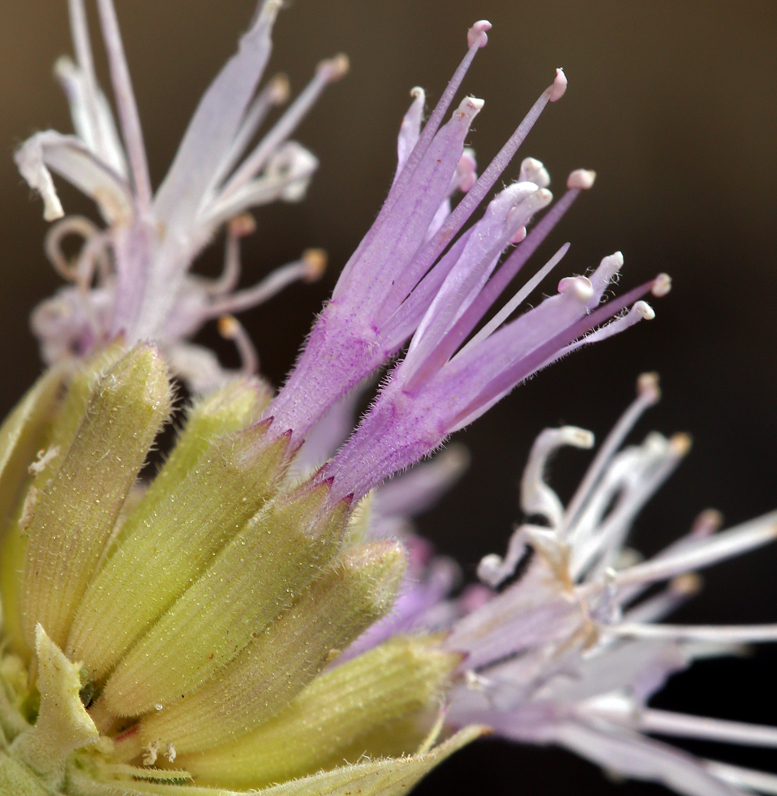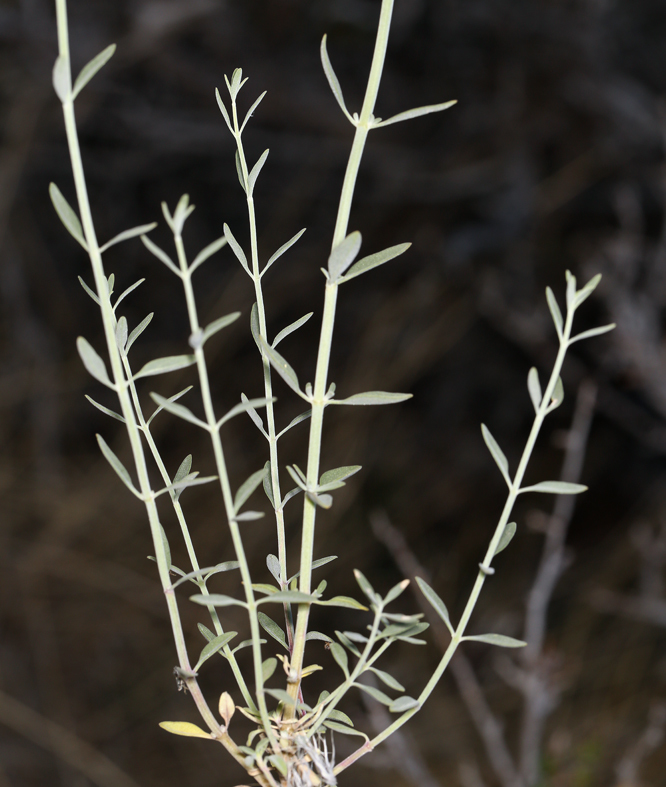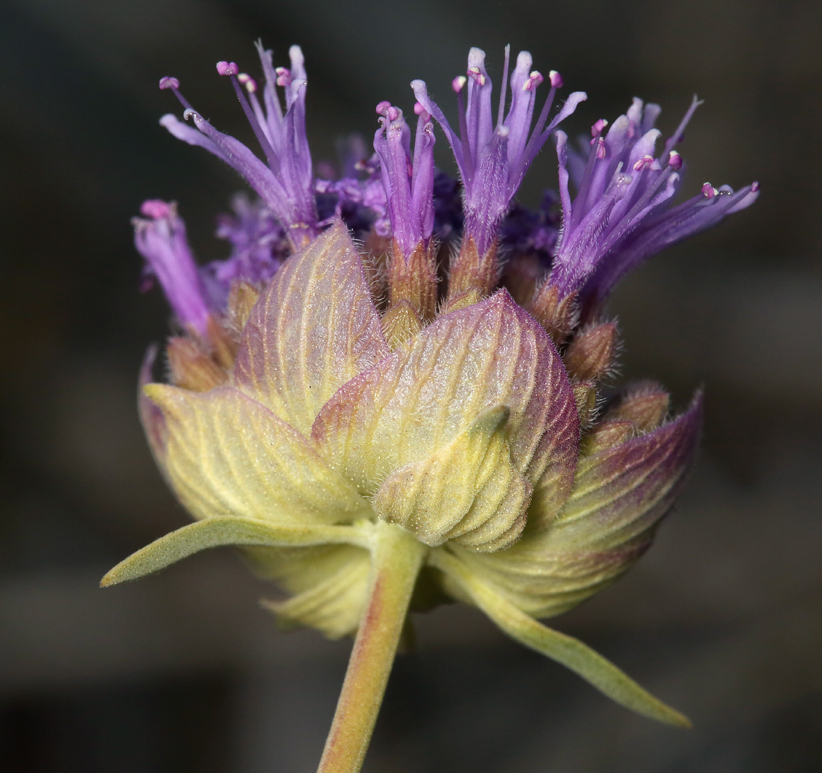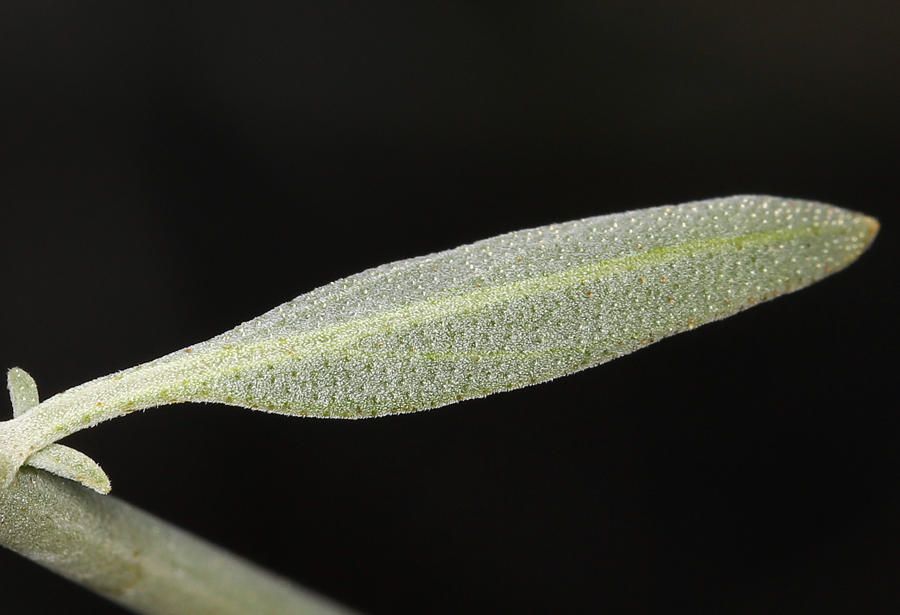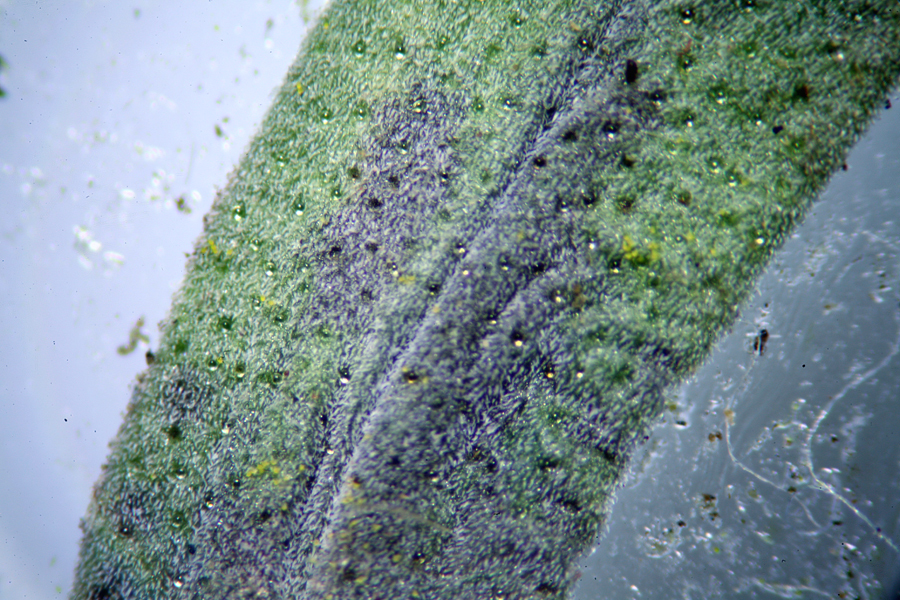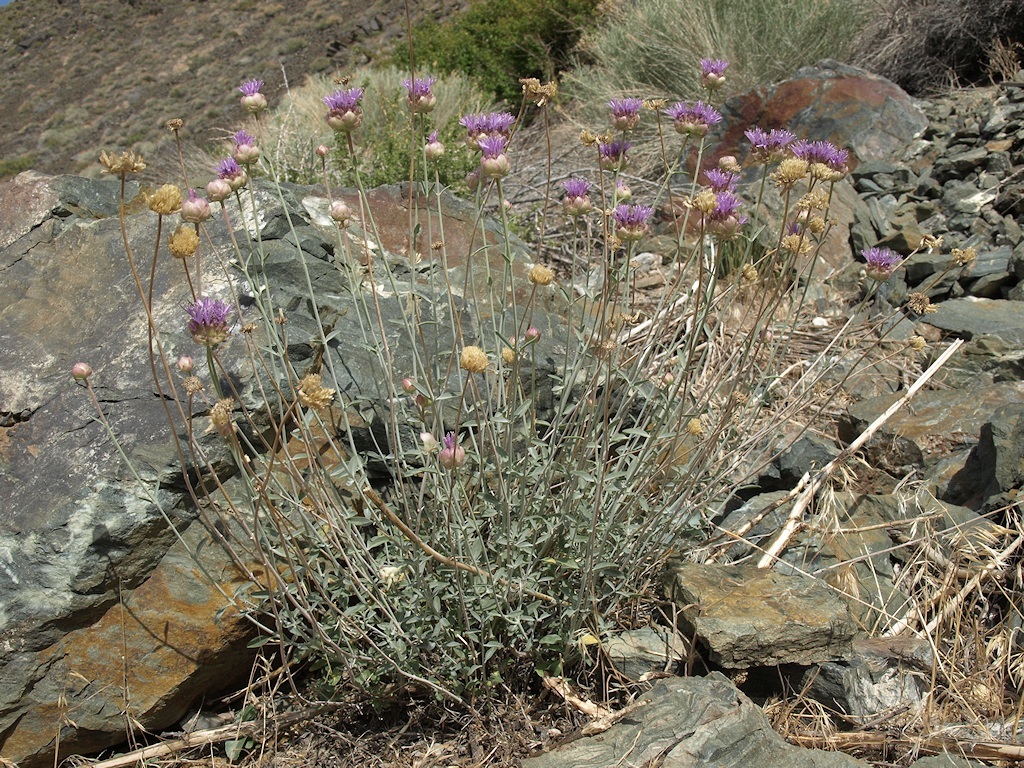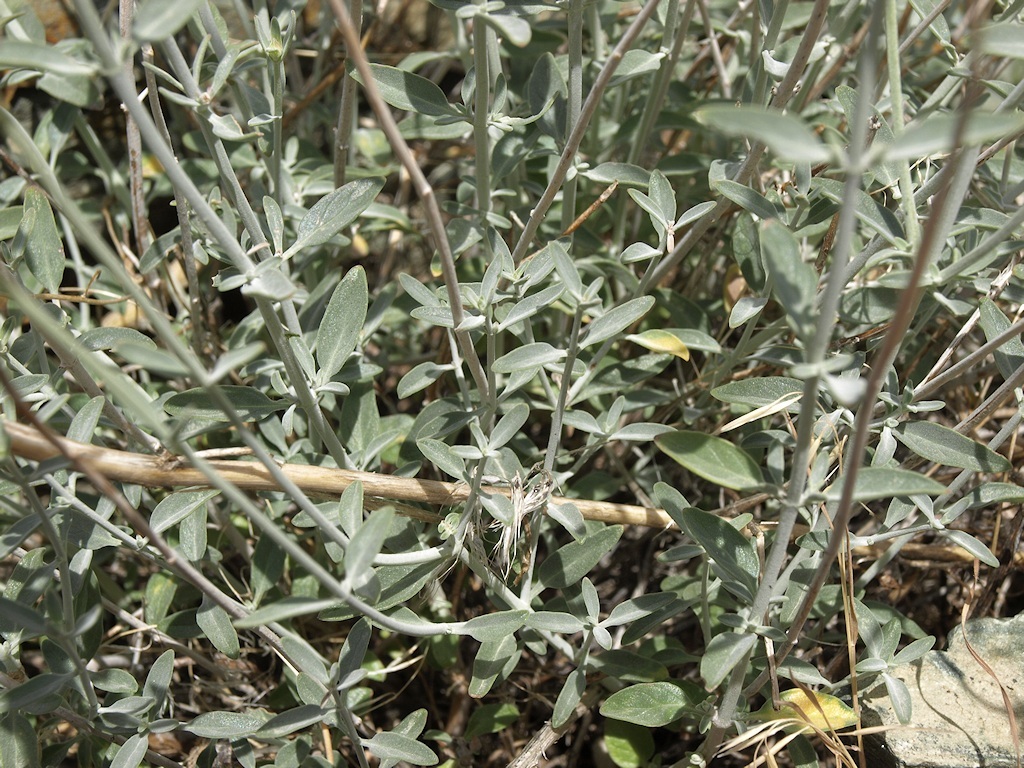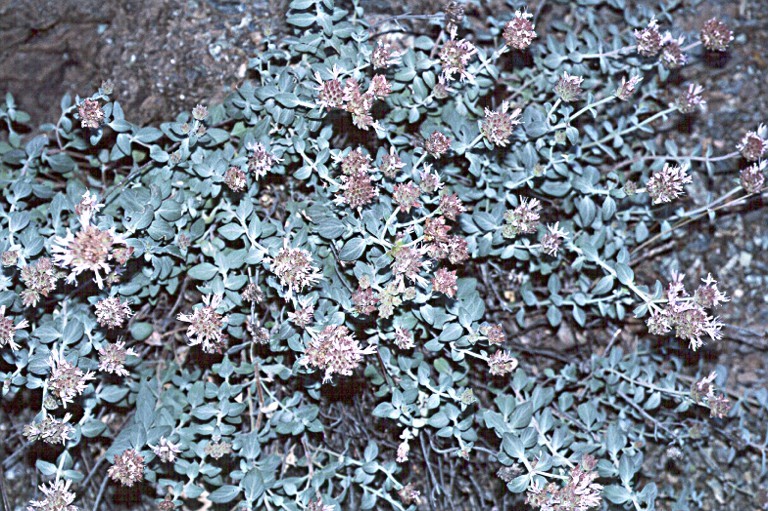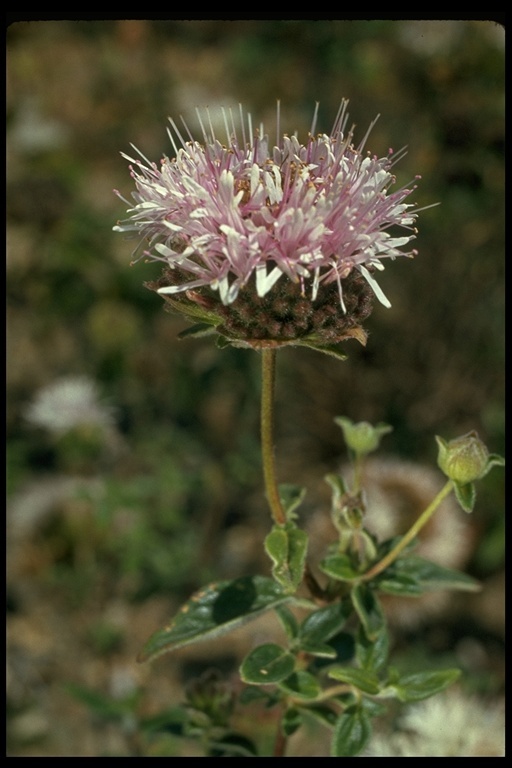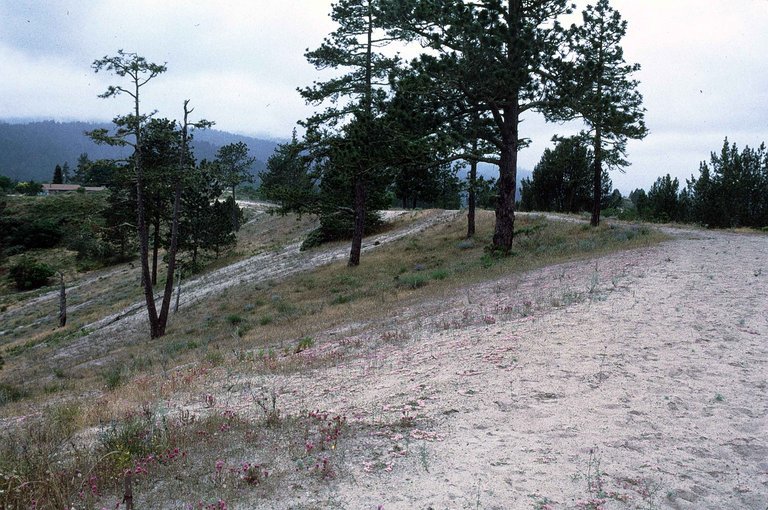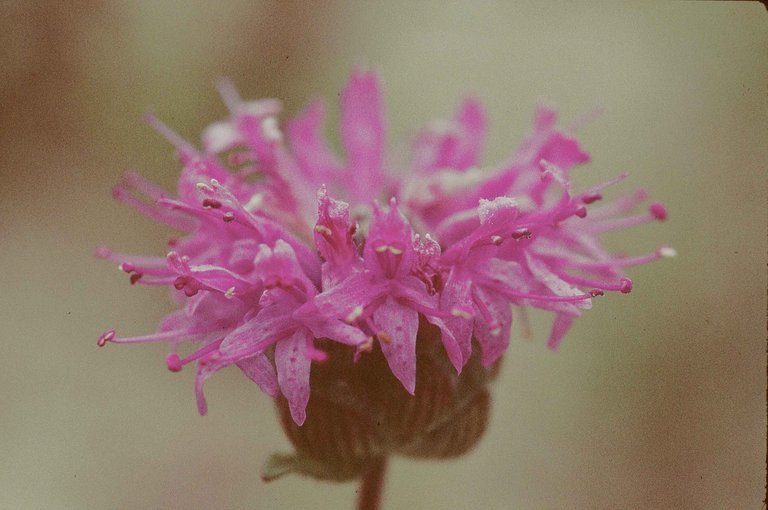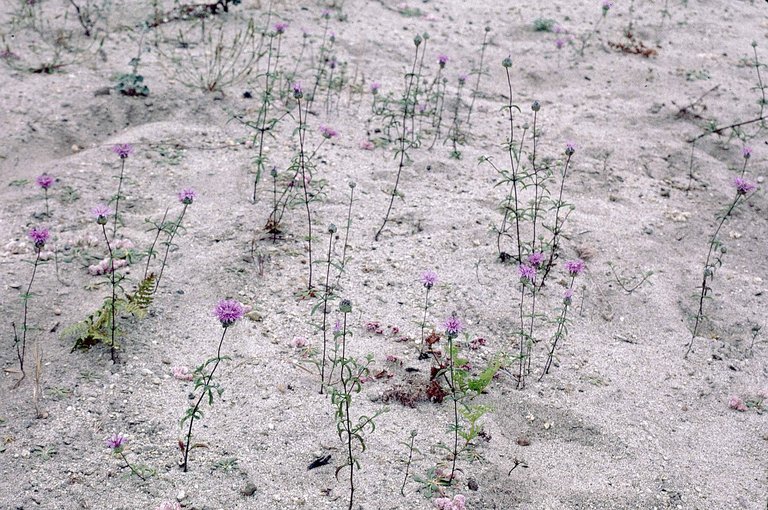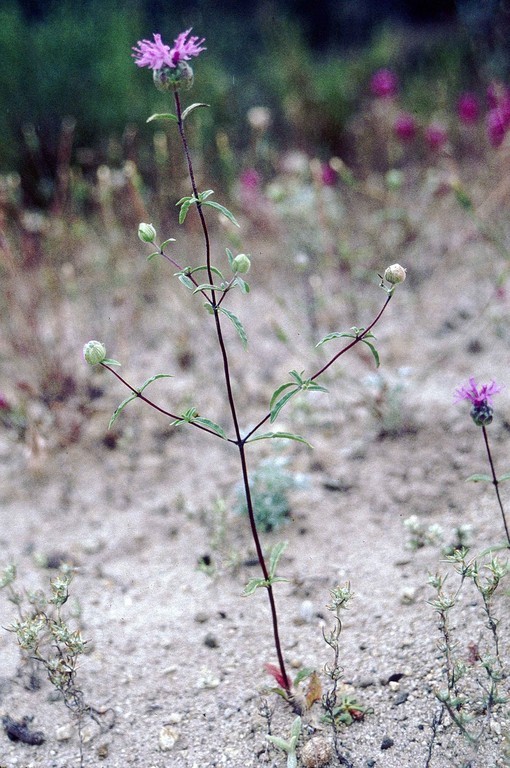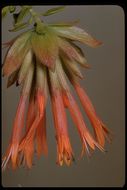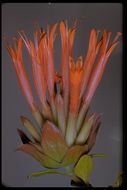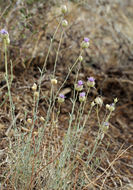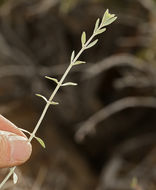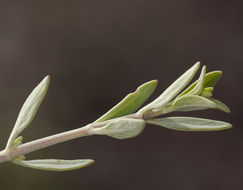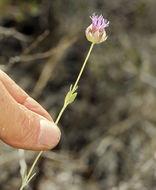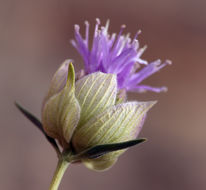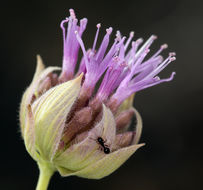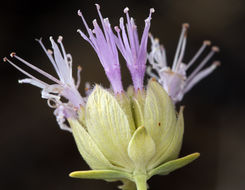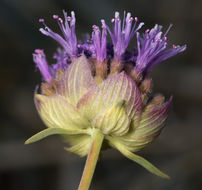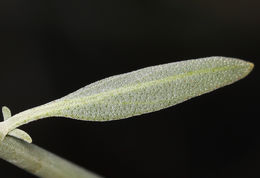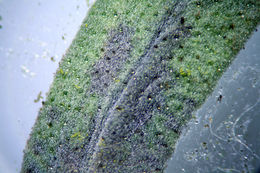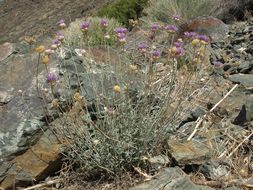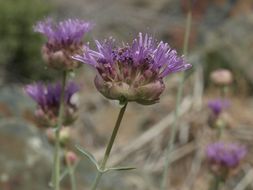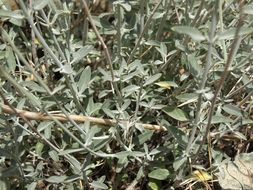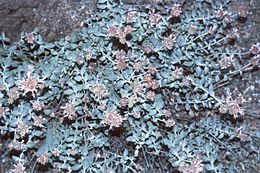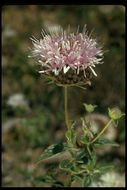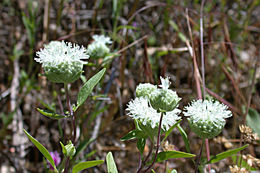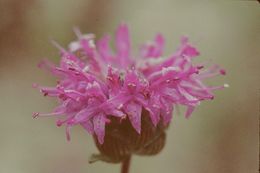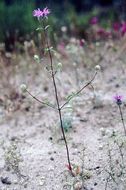-
1998 California Academy of Sciences
CalPhotos
-
1998 California Academy of Sciences
CalPhotos
-
I have struggled with Monardella. If I had used the Desert Jepson manual, this plant would key to M. linoides ssp. linoides. With TJM2, it might key to ssp. erecta as most leaves are narrower than 4mm. I have called this plant ssp sierrae mostly due to geographic location as most specimens from this region of the white mtns have been given this name in consortium records.
-
I have struggled with Monardella. If I had used the Desert Jepson manual, this plant would key to M. linoides ssp. linoides. With TJM2, it might key to ssp. erecta as most leaves are narrower than 4mm. I have called this plant ssp sierrae mostly due to geographic location as most specimens from this region of the white mtns have been given this name in consortium records.
-
I have struggled with Monardella. If I had used the Desert Jepson manual, this plant would key to M. linoides ssp. linoides. With TJM2, it might key to ssp. erecta as most leaves are narrower than 4mm. I have called this plant ssp sierrae mostly due to geographic location as most specimens from this region of the white mtns have been given this name in consortium records.
-
I have struggled with Monardella. If I had used the Desert Jepson manual, this plant would key to M. linoides ssp. linoides. With TJM2, it might key to ssp. erecta as most leaves are narrower than 4mm. I have called this plant ssp sierrae mostly due to geographic location as most specimens from this region of the white mtns have been given this name in consortium records.
-
I have struggled with Monardella. If I had used the Desert Jepson manual, this plant would key to M. linoides ssp. linoides. With TJM2, it might key to ssp. erecta as most leaves are narrower than 4mm. I have called this plant ssp sierrae mostly due to geographic location as most specimens from this region of the white mtns have been given this name in consortium records.
-
I have struggled with Monardella. If I had used the Desert Jepson manual, this plant would key to M. linoides ssp. linoides. With TJM2, it might key to ssp. erecta as most leaves are narrower than 4mm. I have called this plant ssp sierrae mostly due to geographic location as most specimens from this region of the white mtns have been given this name in consortium records.
-
I have struggled with Monardella. If I had used the Desert Jepson manual, this plant would key to M. linoides ssp. linoides. With TJM2, it might key to ssp. erecta as most leaves are narrower than 4mm. I have called this plant ssp sierrae mostly due to geographic location as most specimens from this region of the white mtns have been given this name in consortium records.
-
I have struggled with Monardella. If I had used the Desert Jepson manual, this plant would key to M. linoides ssp. linoides. With TJM2, it might key to ssp. erecta as most leaves are narrower than 4mm. I have called this plant ssp sierrae mostly due to geographic location as most specimens from this region of the white mtns have been given this name in consortium records.
-
I have struggled with Monardella. If I had used the Desert Jepson manual, this plant would key to M. linoides ssp. linoides. With TJM2, it might key to ssp. erecta as most leaves are narrower than 4mm. I have called this plant ssp sierrae mostly due to geographic location as most specimens from this region of the white mtns have been given this name in consortium records.
-
I have struggled with Monardella. If I had used the Desert Jepson manual, this plant would key to M. linoides ssp. linoides. With TJM2, it might key to ssp. erecta as most leaves are narrower than 4mm. I have called this plant ssp sierrae mostly due to geographic location as most specimens from this region of the white mtns have been given this name in consortium records.
-
glands are seldom mentioned in treatments, other than general remarks for the genus, and for M. odoratissima. I could not help but notice them on both leaf surfaces and on bracts.
-
glands are seldom mentioned in treatments, other than general remarks for the genus, and for M. odoratissima. I could not help but notice them on both leaf surfaces and on bracts.
-
Latitude and Longitude are WGS84 +/- 5 meters.
-
Latitude and Longitude are WGS84 +/- 5 meters.
-
Latitude and Longitude are WGS84 +/- 5 meters.
-
-
2001 California Academy of Sciences
CalPhotos
Santa Barbara County, California
-
vouchered by DWT #18077 (JEPS backlog)
-
-
-
-

